Abstract
Ambient air may be contaminated with or carry significant levels of a variety of potentially harmful microorganisms. There are three major sources of such microbes: a) those arising from microbial decomposition of various substrates associated with particular occupations (e.g., "moldy" hay leading to hypersensitivity pneumonitis), b) those associated with certain types of environments (e.g., Legionnaires' bacteria in water supplies), and c) those stemming from infective individuals harboring a particular pathogen (e.g., tuberculosis). This presentation deals primarily with important microorganisms from occupational and environmental sources and clearly differentiates from case to case transmission via droplet nuclei infection. Microorganisms that are uniformly injurious are differentiated from those that are more opportunistic (i.e., those that cause problems only in people with preexisting debilities). Such microorganisms are categorized according to whether they are allergenic, infectious, or capable of inducing toxic or inflammatory reactions when inhaled. Representative examples from each of these categories, which include bacteria, fungi, rickettsia, and amoebae, are discussed. The conditions responsible for the entrance of significant numbers of these microbes into the air, the mechanisms by which they produce injury, and the methods of prevention are also considered. With attention given to some of the basic sources and requirements for such microorganisms to reproduce and enter the ambient air environment, it is a relatively simple matter to prevent the occurrence of health problems.
Full text
PDF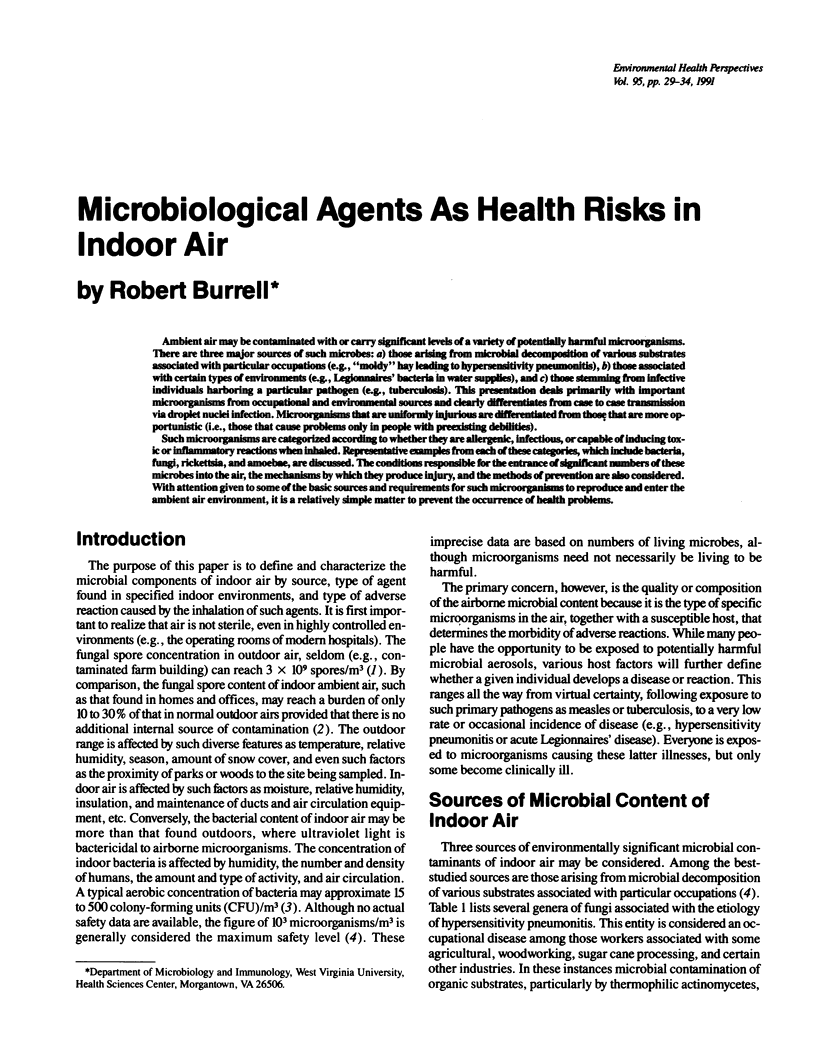

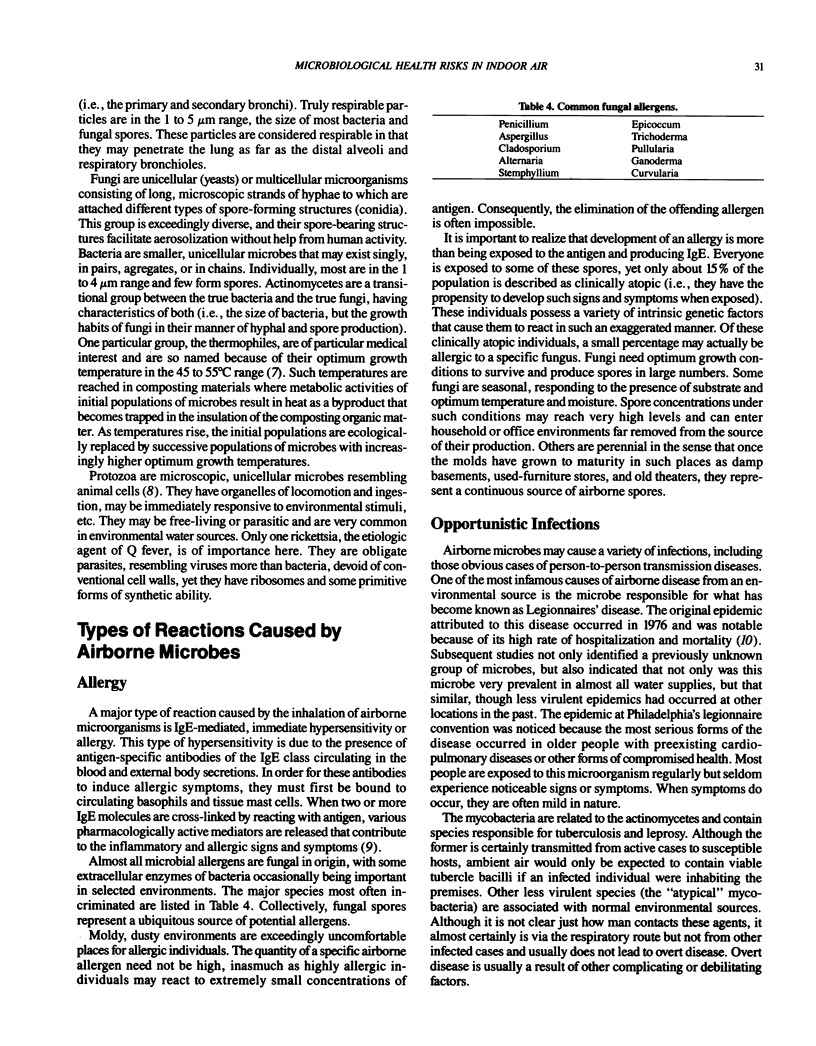
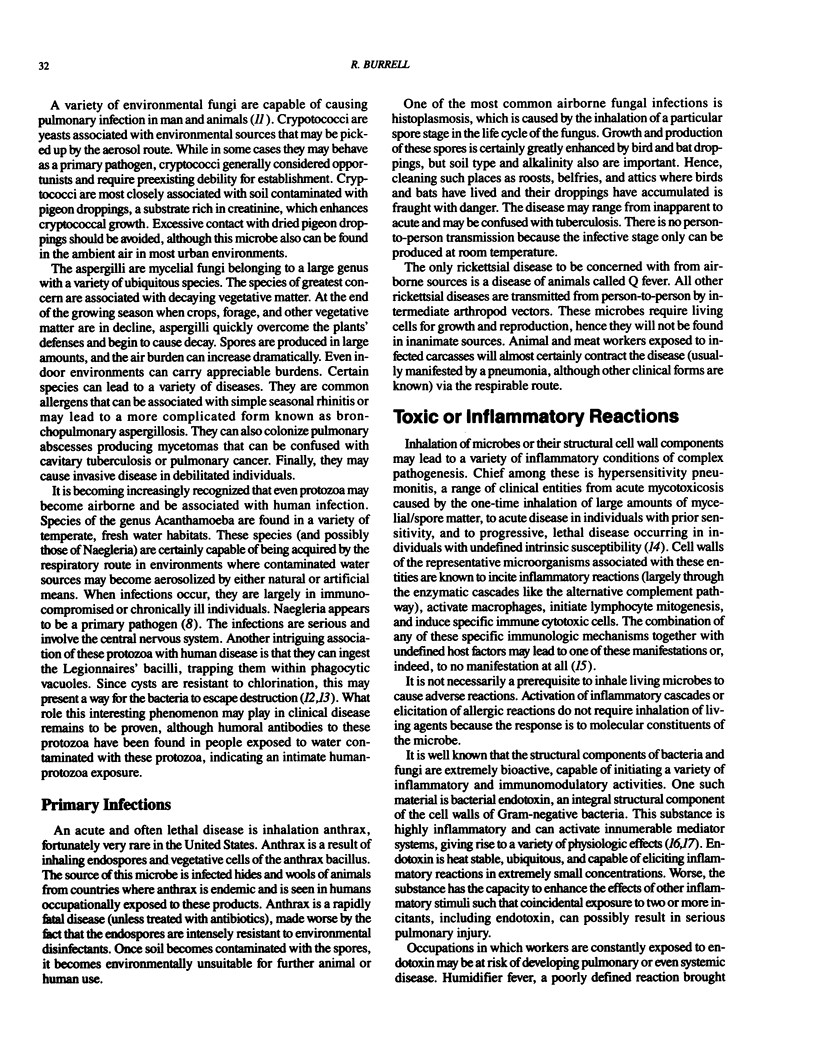
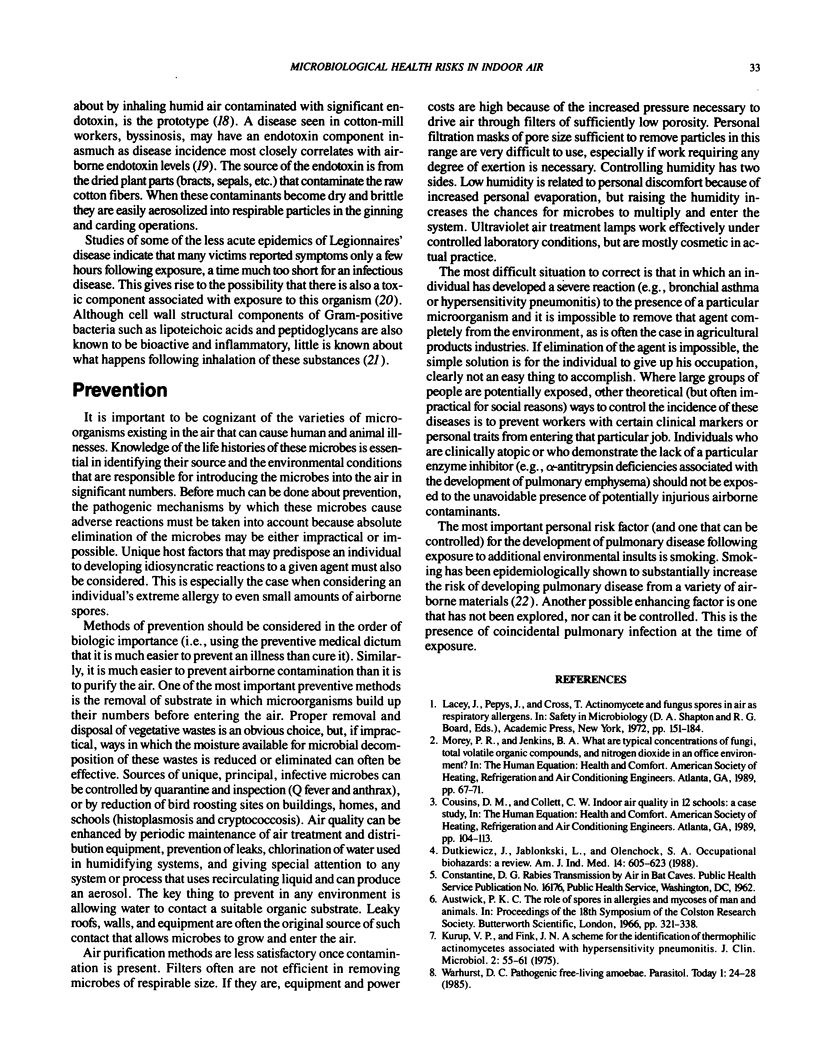
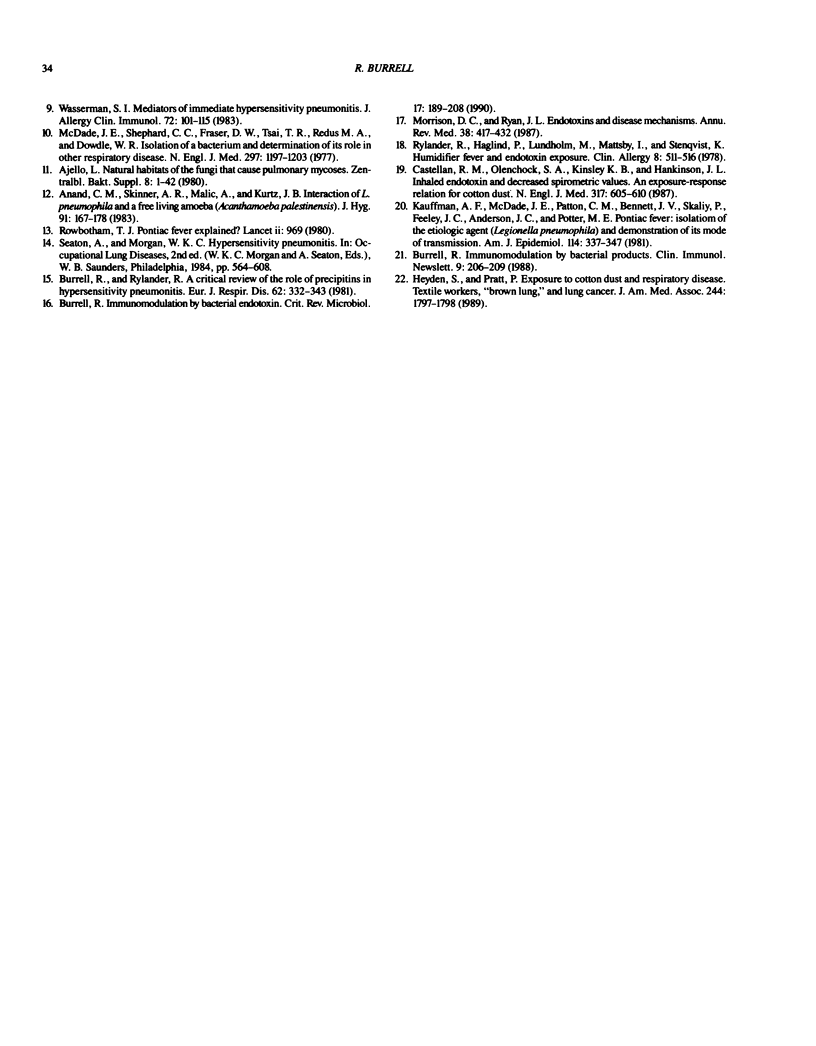
Selected References
These references are in PubMed. This may not be the complete list of references from this article.
- Anand C. M., Skinner A. R., Malic A., Kurtz J. B. Interaction of L. pneumophilia and a free living amoeba (Acanthamoeba palestinensis). J Hyg (Lond) 1983 Oct;91(2):167–178. doi: 10.1017/s0022172400060174. [DOI] [PMC free article] [PubMed] [Google Scholar]
- Burrell R. Immunomodulation by bacterial endotoxin. Crit Rev Microbiol. 1990;17(3):189–208. doi: 10.3109/10408419009105725. [DOI] [PubMed] [Google Scholar]
- Burrell R., Rylander R. A critical review of the role of precipitins in hypersensitivity pneumonitis. Eur J Respir Dis. 1981 Oct;62(5):332–343. [PubMed] [Google Scholar]
- Castellan R. M., Olenchock S. A., Kinsley K. B., Hankinson J. L. Inhaled endotoxin and decreased spirometric values. An exposure-response relation for cotton dust. N Engl J Med. 1987 Sep 3;317(10):605–610. doi: 10.1056/NEJM198709033171005. [DOI] [PubMed] [Google Scholar]
- Dutkiewicz J., Jabłoński L., Olenchock S. A. Occupational biohazards: a review. Am J Ind Med. 1988;14(5):605–623. doi: 10.1002/ajim.4700140511. [DOI] [PubMed] [Google Scholar]
- Heyden S., Pratt P. Exposure to cotton dust and respiratory disease. Textile workers, 'brown lung,' and lung cancer. JAMA. 1980 Oct 17;244(16):1797–1798. [PubMed] [Google Scholar]
- Kaufmann A. F., McDade J. E., Patton C. M., Bennett J. V., Skaliy P., Feeley J. C., Anderson D. C., Potter M. E., Newhouse V. F., Gregg M. B. Pontiac fever: isolation of the etiologic agent (Legionella pneumophilia) and demonstration of its mode of transmission. Am J Epidemiol. 1981 Sep;114(3):337–347. doi: 10.1093/oxfordjournals.aje.a113200. [DOI] [PubMed] [Google Scholar]
- Kurup V. P., Fink J. N. A scheme for the identification of thermophilic actinomycetes associated with hypersensitivity pneumonitis. J Clin Microbiol. 1975 Jul;2(1):55–61. doi: 10.1128/jcm.2.1.55-61.1975. [DOI] [PMC free article] [PubMed] [Google Scholar]
- McDade J. E., Shepard C. C., Fraser D. W., Tsai T. R., Redus M. A., Dowdle W. R. Legionnaires' disease: isolation of a bacterium and demonstration of its role in other respiratory disease. N Engl J Med. 1977 Dec 1;297(22):1197–1203. doi: 10.1056/NEJM197712012972202. [DOI] [PubMed] [Google Scholar]
- Morrison D. C., Ryan J. L. Endotoxins and disease mechanisms. Annu Rev Med. 1987;38:417–432. doi: 10.1146/annurev.me.38.020187.002221. [DOI] [PubMed] [Google Scholar]
- Rowbotham T. J. Pontiac fever explained? Lancet. 1980 Nov 1;2(8201):969–969. doi: 10.1016/s0140-6736(80)92120-0. [DOI] [PubMed] [Google Scholar]
- Rylander R., Haglind P., Lundholm M., Mattsby I., Stenqvist K. Humidifier fever and endotoxin exposure. Clin Allergy. 1978 Sep;8(5):511–516. doi: 10.1111/j.1365-2222.1978.tb01504.x. [DOI] [PubMed] [Google Scholar]
- Warhurst D. C. Pathogenic free-living amoebae. Parasitol Today. 1985 Jul;1(1):24–28. doi: 10.1016/0169-4758(85)90102-4. [DOI] [PubMed] [Google Scholar]
- Wasserman S. I. Mediators of immediate hypersensitivity. J Allergy Clin Immunol. 1983 Aug;72(2):101–119. doi: 10.1016/0091-6749(83)90512-2. [DOI] [PubMed] [Google Scholar]


